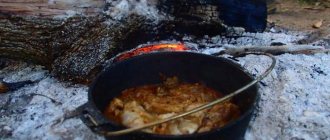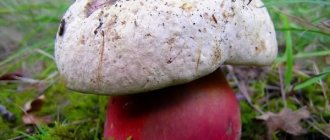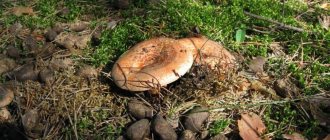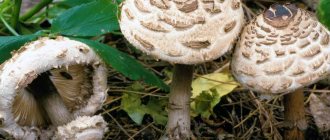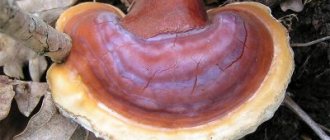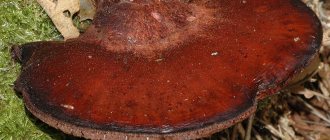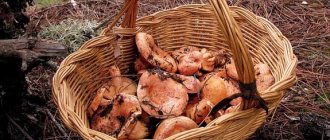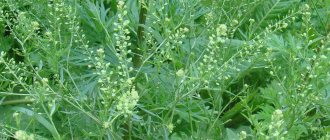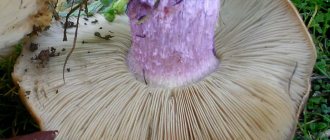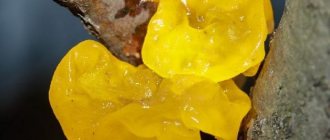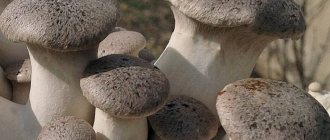Camelina (spruce, pine, etc.) belongs to the kingdom of mushrooms, the diversity of which amounts to hundreds of thousands of specimens and is estimated by mycologists at 1.5 million species. There are very few large and visible representatives. They make up only a small part of the total.
Possessing high taste, unsurpassed aroma and wide distribution, camelina is used in cooking. Many mushroom connoisseurs put it on a par with milk mushrooms and champignons. Spruce and pine saffron milk caps, prepared by dry salting, have long been known in Rus'. They were always served at the royal table.
This valuable edible mushroom has no poisonous counterparts, such as honey mushroom or white mushroom. Collecting saffron milk caps is simple and quick. The only gifts of the forest with which they can be confused are the less tasty trumpets. Currently, several species of these mushrooms are known, which differ in environmental characteristics and slightly in appearance. We draw your attention to the most common examples.
Salmon saffron
As a rule, saffron mushrooms are spruce inhabitants. However, this species is found in mixed forests, on soils rich in calcium. It is considered edible and can be eaten after soaking and salting. Collection time is autumn. The salmon cap has a slightly depressed center and a dry surface. The color, as you might guess from the name, is pink. There are sometimes faint concentric circles on the surface.
The plates located on the underside are descending, salmon-colored, and turn red when touched. The hat most often has an elongated oval shape. Dimensions are 5-8 centimeters long, 5-6 cm wide. The leg is painted to match the cap, and there are often spots on the smooth surface. The mushroom is not found in our latitudes. It is common in Europe and in appearance is very similar to spruce camelina.
Where and at what time does it grow?
Fans of salted forest mushrooms are interested in where saffron milk caps grow. They are found everywhere, although they are most widespread in Europe and North America.
Most species live in symbiosis with coniferous trees, so you need to look for them under spruce, pine and Crimean firs. The only exception is the oak saffron milk cap, which is also called milk mushroom. It grows under deciduous trees.
Lighting is of great importance for the growth of fruiting bodies. Saffron milk caps do not tolerate shade or too dense forests, so they are more often found on the edges, clearings and clearings. On sandy loam soil they are often found in large groups, forming “witch circles”.
The flesh of saffron milk caps is very tender and does not tolerate cold well. Therefore, the collection season falls in the summer months and autumn. The optimal temperature for the development of fruiting bodies is +17–27 degrees. When frost occurs, the proliferation of mushrooms stops.
Japanese camelina (fir)
A species native to Japan and the south of Primorsky Krai. The season begins in September-October. As the name suggests, it can be found in forests formed by whole-leaved fir. The cap of the mushroom is large - from 6 to 8 cm in diameter with a depressed center and folded edges. As it grows, it becomes funnel-shaped. Color – light terracotta, pinkish-ocher with concentric circles. The plates are brighter and shimmering. The pulp is fresh in taste compared to other types. As a rule, it does not turn green at the break. The milky juice has a blood-red hue.
How to distinguish saffron milk caps from edible and false saffron milk caps?
Differences between saffron milk caps and volushki
I would like to immediately clarify that, unlike saffron milk caps, they never have a red tint. Therefore, if you find a reddish mushroom, then with a high probability you can say that it is the saffron milk cap that is in front of you. True, in this case it will be better if you pick it up and examine it. If you found exactly what you were looking for, the mushroom cap will be slightly sticky.
If you go to the forest in rainy weather, it may be slightly slippery, as if covered with a thin layer of mucus. Also pay attention to the places where you held the mushroom when you cut it. If they turn slightly green, then this is the saffron milk cap. If you finally want to eliminate the appearance of the mushroom in your basket, then simply break the mushroom and sniff the smell of the juice. In camelina it will have a pleasant aroma of tree resin.
Other differences between saffron milk caps and volnushki:
- Volnushki have a characteristic shaggy cap that no other mushroom has. In saffron milk caps, on the contrary, it is almost perfectly smooth.
- The inside of the cap is always pinkish, and the saffron milk cap can have a color from light yellow to bright orange. If you find an old mushroom, then the plates on the inside may even be greenish-blue.
- Also know that saffron milk caps love to grow in coniferous forests. Therefore, if you go into a birch forest, then with a high probability you can say that you will collect some trumpets there.
- In addition, remember that saffron milk caps always grow larger than saffron milk caps. As practice shows, the latter are almost always half the size of red mushrooms.
Red saffron milk cap
Red camelina is not the most common species. Found in coniferous (pine, spruce) plantings. Grows in small groups (clearings) under young trees. The season begins in the summer and continues throughout the fall, until frost. Rain is required for a bountiful harvest. The large cap (5-15 cm in diameter) is dry and initially has a hemispherical shape. As it grows, a depression appears in the middle. The color is orange-red or with a reddish tint. The plates on the lower surface of the cap are adherent or slightly descending. When touched, they change color from yellow-orange to green.
Like spruce camelina, this species is distinguished by fragile and brittle flesh with a dense structure. It is whitish in color with randomly located red spots. At the fracture, a blood-red thick milky juice is released. The leg is strong, 4-6 cm high, cylindrical in shape with a powdery coating and pronounced red pits. The spores are white. Red saffron milk can be confused with the real thing. The main difference is the presence of pronounced concentric circles on the cap of the latter and the absence of bright milky juice. From both species, a valuable antibiotic, lactarioviolin, is prepared, which suppresses the activity of many bacteria, including the causative agent of such a dangerous disease as tuberculosis.
The saffron milk cap is real
Even an inexperienced mushroom picker will find it difficult to confuse spruce mushrooms with real mushrooms. Its name alone suggests that it has all the best. It is characterized by an incomparable mushroom aroma, bright color and a beautiful funnel-shaped cap, reminiscent of the top of milk mushrooms. Real camelina is found in mixed and coniferous forests, usually under pine trees. It can be difficult to notice. It grows under a cover of grass, often buried in moss. The season begins in late summer and continues through the fall.
The hat has a concave shape with rolled edges. Its surface is orange-brown with clearly defined concentric circles, its diameter grows from 4 to 18 cm. The leg is short, dense, with bright spots. Its height is 3-7 cm, circumference is 1.5-2 cm. The dense yellow-orange pulp turns green at the break and secretes an abundant thick milky juice of an orange hue with a characteristic sweetish-fruity aroma.
Taste qualities
Real saffron milk cap is an edible, healthy elite mushroom. Used fresh, boiled and fried. Most often used for salting and pickling. It is superior to other mushrooms in its rapid absorption by the body.
Ryzhiki can be baked in the oven.
Raw mushrooms
Since saffron milk caps do not require soaking, some gourmets eat them raw. It is safe for a healthy person. The saffron milk caps are cleared of debris, sorted and sprinkled with salt. For better salting, place under pressure for 20 minutes. The dish of raw saffron milk caps is ready!
Common saffron milk cap.
Fried or boiled mushrooms
A classic version of hot processing of mushrooms. Fried saffron milk caps are served as a separate dish or used as a filling for pancakes and pies. Boiled mushrooms are often used to make salads. Such dishes are not only incredibly tasty, but also very beautiful due to the bright red color of the product.
Salted and pickled mushrooms
For the winter, saffron milk caps are pickled or salted. To preserve the specific taste of this mushroom, it is better to treat it with salt rather than vinegar. Salted saffron milk caps have always been considered a delicacy on the table. To preserve the appetizing red color of mushrooms when pickling, it is recommended to first scald them with boiling water.
When pickling mushrooms, real saffron milk can itself be used as a seasoning. If you have a low yield for saffron milk cap, then you should not pickle this mushroom separately. It is better to prepare an assortment of mushrooms suitable for pickling. You can take kubari, milk mushrooms, and volushka. When you add real Rizhik, the whole pickle will be filled with the incomparable aroma and exquisite taste of this royal mushroom.
Spruce saffron milk cap
Spruce camelina is very common in our forests, the photo of which you see below. It grows in coniferous forests, usually in spruce forests, hence its second name – spruce forest. The season begins at the end of summer and continues until frost. In hot summers the number of mushrooms is small. Like other saffron milk caps, it prefers cooler weather and plenty of rainfall. The mushroom has a small cap with a diameter of 2-8 cm. At first it is characterized by a convex shape, and then, as it grows, it becomes flat-concave with the edges drooping down. The structure is quite fragile, there is no prolapse. The skin on the cap is smooth, and in damp weather it has a characteristic mucus. Its color is orange with pronounced concentric circles. When damaged and with age, the color changes to greenish.
The leg is 3-7 cm cylindrical in shape. As it grows, a cavity appears inside. The pulp is orange, with a pleasant taste and faint aroma. The mushroom can be confused with real saffron milk cap or pink saffron. The latter is conditionally edible and has low nutritional value. When damaged, the camelina always takes on a fir-green color, just as during the cooking process. And this is one of the distinguishing features.
Evaluation of taste qualities, medicinal properties, benefits and possible harm
In terms of taste, spruce saffron milk cap is considered edible and belongs to the first category.
REFERENCE! Mushrooms of the first category represent the greatest nutritional value and have the highest nutritional characteristics.
Spruce trees contain a large amount of carotenoids and vitamin A. In terms of amino acid content, they compete with red meat, which is why they can be a good alternative for vegetarians and during periods of fasting. Polysaccharides and tyrosinase in the composition inhibit the oxidative processes of fats.
Not recommended for consumption by people with gastrointestinal problems, pregnant and lactating women, and children, as they are difficult food to digest. Also undesirable for use if you have problems with the kidneys and urinary system.
Used in folk medicine to prepare alcoholic extracts that have antibacterial and fungicidal properties. It is used in the treatment of respiratory diseases, skin fungal infections, vitiligo, and as an aid in the fight against cancer.
Camelina or pine
There are different opinions among botanists regarding the existence of this species. The former declare its independence, while the latter consider it a variety. However, in terms of nutritional value and taste, it is not much different from spruce or real saffron milk cap. The mushroom grows exclusively in pine forests (pine forests), hence its second name.
It forms a symbiosis with already mature pines. It is usually found singly and not in groups. The dimensions are similar to the previous view. The hat is painted bright orange. With age, a depression appears in the center, the edges are bent and pubescent. Concentric circles are present, but they are wider and not as smooth around the edges as in the spruce saffron.
Benefits of saffron milk caps
The pulp of saffron milk caps is orange due to the presence of carotene and provitamin A, which bring great benefits to the body. That is why these mushrooms are considered not only tasty, but also medicinal.
Beneficial features:
- Strengthen the immune system and act as a powerful antioxidant.
- They support the barrier function of mucous membranes, which is very important during a surge in colds.
- Reduce the risk of the formation of cholesterol plaques and the development of diseases of the cardiovascular system.
In addition, a natural antibiotic, lactrioviolin, was found in the pulp of camelina mushrooms, which can inhibit many pathogenic bacteria. As a result, their reproduction stops and the risk of disease is reduced.
Young saffron milk caps can be eaten almost raw, just adding a little salt and roasting over a fire. But most lovers of “quiet hunting” still prefer to eat them salted.
There are also contraindications for consuming saffron milk caps. They are highly nutritious, so they should be used with caution by people with obesity or serious liver and kidney diseases. It is better not to include mushrooms at all in a small child’s children’s menu, as they can lead to digestive upset.
How do spruce mushrooms differ from pine mushrooms?
Firstly, the habitat. Both of them grow in conifers. But pine camelina is localized only in forests, as it forms a symbiosis with the tree. It's not that easy to notice. He seems to be hiding in the grass. Prefers sandy soils. Spruce saffron milk cap is more visible.
Secondly, they differ in external characteristics. The concentric circles on the cap of the pine saffron milk cap are larger and more diffuse, and the surface is pubescent. While its spruce counterpart has mucus (especially in wet weather) and the flesh is more brittle. Pine mushroom is strong, dense, and does not turn green so quickly. Thirdly, the taste of mushrooms also differs. Camelina from pine forests is more aromatic and tasty, which is why it is often called a delicacy. True, it is more difficult to find, since the mushroom most often grows alone, rather than in groups.
Preparing saffron milk caps for cooking.
Before you start preparing any mushroom dishes, you need to prepare these mushrooms.
What can be made from saffron milk caps? They can be boiled, fried, pickled or marinated, or stewed. You can add it to soup and salad, make sauces and pie fillings from them.
In any case, the saffron milk caps are moved and cleaned of dirt. Rotten parts and wormholes are removed. For salting, you don’t have to wash them, but just wipe them with a cloth. True, it is not recommended to wash them at all, as they can swell from water. If you do not dry them, you need to cook them immediately. If it is impossible to process the saffron milk caps right away, they are dried or frozen.
Before frying saffron milk caps, it is best to place them in a heated frying pan without oil and wait until the moisture comes out of them. After this, the saffron milk caps can be fried in oil.
So, saffron milk caps can be fried, salted, pickled, stewed and added to various dishes. What can you cook from saffron milk caps?
Cooking methods
Agree, the name “saffron milk cap” has a lot of warmth and even affection. A beautiful and fragrant mushroom has become extremely popular in our country. We have listed the main species above, but, as a rule, the ones that most often end up in our baskets are pine saffron and spruce. Every mushroom picker should know how to cook them. Saffron milk caps of all stripes and sizes are harvested. However, those whose cap is slightly smaller in diameter than the neck of the bottle are considered a real delicacy. The main cooking methods are as follows.
- pickling (dry and cold);
- pickling;
- pickling;
- frying and cooking.
Let us dwell in more detail on the traditional methods of pickling saffron milk caps, which have been known since ancient times.
Cold Ambassador
Before the pickling process, the saffron milk caps must be sorted out, cleared of debris, and washed under running water. Do this as quickly as possible so that the mushrooms do not have time to absorb too much moisture. Then cut off any overly long or damaged legs. Place the mushrooms in dense layers with the cap down in a pre-prepared bowl (ceramic or glass). Sprinkle each row thoroughly with salt (consumption 40-60 g per kilogram of fresh mushrooms).
When the process is complete, place a wooden circle wrapped in a clean rag on top of the saffron milk caps. Its diameter must correspond to the size of the container. Place a weight (weight) on top. After a couple of days, the mushrooms will give juice, and the air remaining between the layers will come out, compacting them more. The saffron milk caps salted in this way can be eaten after 30-40 days.
Cooking recipes
Spruce has high nutritional qualities and is used both fresh and pickled. These mushrooms are absolutely not suitable for drying.
Primary processing
The mushroom has a characteristic milky juice in its pulp, which imparts a slight bitterness when cooked and preserved. Some cooks soak spruce trees to get rid of the milky juice, but most do not do this, since this characteristic feature gives a special taste to the finished dish.
Cooking
The saffron milk caps are not boiled before frying - they may darken from contact with water. Boiling is used only before marinating as part of the process:
- Washed saffron milk caps are boiled in water according to the recipe, the liquid is drained immediately after cooking.
- The boiled mushrooms are placed in a colander and allowed to drain completely.
Pickling
Ingredients:
- water (preferably spring water);
- vegetable oil – 5 tbsp;
- peeled spruce trees – 1 kg;
- greenery;
- salt – 4–5 tbsp. l.;
- vinegar – 1 des.l.;
- small head of garlic;
- Bay leaf;
- allspice or black peppercorns;
- spices to taste.
How to cook spruce saffron milk cap:
- Cook the mushrooms for 30–40 minutes.
- Prepare the brine: add garlic, spices, salt, vegetable oil and vinegar to a small amount of water.
- The marinade is boiled for 10 minutes.
- Spruce trees are placed in sterile jars in layers.
- Mushrooms are poured with hot brine.
- The jar is closed with a nylon lid or rolled up with a metal one.
Cold salting for the winter
Ingredients:
- peeled saffron milk caps – 5 kg;
- rock salt – 10 tbsp. l.;
- bay leaf – 4 pcs.;
- black peppercorns – 3 tbsp. l.;
- cherry leaf – 20 pcs.;
- horseradish leaf – 4 pcs.;
- fresh dill umbrellas – 4-5 pcs.
Preparation:
- Cherry and horseradish leaves are doused with boiling water and divided into two parts.
- The first part of the greens is placed on the bottom of the pan.
- The washed saffron milk caps are placed in layers in a pan, sprinkling each layer with salt and adding dill umbrellas, bay leaves and pepper.
- The second part of the leaves is folded on top.
- The pan is covered with a lid of smaller diameter and placed under a press.
- Marinate for 3-4 weeks in a cool, dark place.
- For storage, the prepared mushrooms are transferred to sterile jars and sealed with metal lids.
Canning
Ingredients:
- spruce trees – 1 kg;
- spring water;
- salt to taste.
Preparation:
- Boil the saffron milk caps for 1-2 minutes.
- Boiled saffron milk caps are immediately cooled in cold water and drained in a colander.
- After the water has completely drained, the mushrooms are placed in containers.
- Pour cold water with 1 tbsp. salt so that it does not completely cover the mushrooms.
- The container is covered with gauze and placed under a press.
- Leave the mushrooms under pressure for 30-40 days.
- After salting, the mushrooms are placed in sterile jars and rolled up or covered with nylon lids.
Video reviews
A selection of videos with descriptions and recipes for preparing mushrooms
Mushroom experts of the Russian Federation TV, Germany. Svetlana life
Dry salted saffron milk caps
This method has been used for a long time in Rus'. Mushrooms were salted in huge wooden barrels so that there would be enough for the whole winter. The product was especially valued during Lent. Nowadays, not everyone trusts this cooking option; many pre-boil the mushrooms. Boiled saffron milk caps retain their color and do not turn green, but they lose their unique aroma and taste. If you want to try mushrooms in their original form, then try dry salting.
Before salting spruce or pine saffron milk caps, clean them of debris and grass. Then wipe thoroughly with a dry cloth and cut off the long stems. Further actions are similar. Place the mushrooms with their caps down in a pickling container, without crushing or pressing. Each layer is sprinkled with salt (40 g per kilogram). A wooden circle is placed on top, and a load is placed on it. The mushrooms will begin to settle in just a couple of hours; as they compact, new layers can be added.
You should not use various spices and herbs - this will only take away the natural aroma of saffron milk caps. During the pickling process, the mushrooms will likely change color from orange-brown to green. But it normal. Camelinas prepared by dry or cold salting should be stored in a cool, dry room. Make sure they are constantly covered with brine.
Preparing red-haired guests of the coniferous forest
These mushrooms are most popular when pickled - they have an excellent taste, which, according to consumers, is much better than black milk mushrooms and even porcini mushrooms. In order to quickly prepare a tasty dish, you will need regular salt (not iodized), a damp cloth, and a wooden box for 10-15 liters. We take a fresh mushroom, wipe the hat with a damp cloth, then put it in layers in a box, carefully salting each of them. It is important that the thickness of one layer is no more than 6 centimeters, since the pulp may not be salted well due to its high density. After 25 days, you can take out and eat this delicious dish!
Frying mushrooms is no different from champignons or oak mushrooms. Just cut into cubes, carefully add salt, add vinegar and pepper to taste, throw in a frying pan, and bring to a golden color. Sometimes (if you are collecting large specimens) you need to soak them additionally, since the juice may contain bitterness, which is removed only by soaking. You can add a little vinegar to neutralize the pungent odor.
Mushroom soup turns out very tasty. It is advisable to throw one part at the very beginning so that they boil (for smell and taste), and the other portion with the potatoes so that they remain firm. The soup will have an unforgettable taste and aroma! And, yes, bon appetit!
